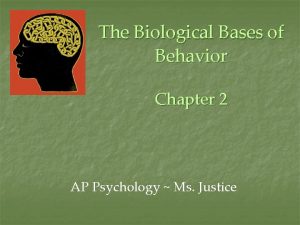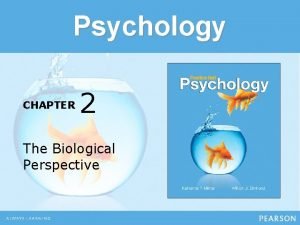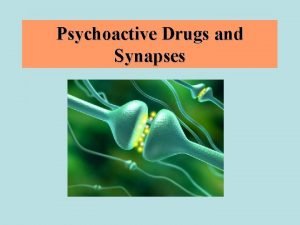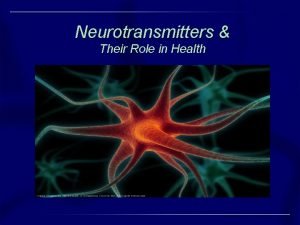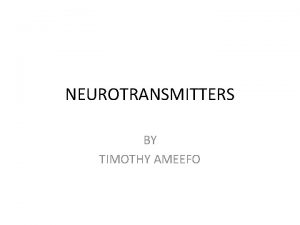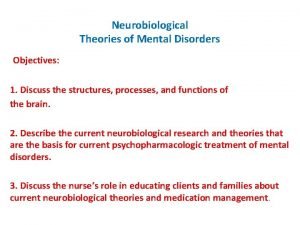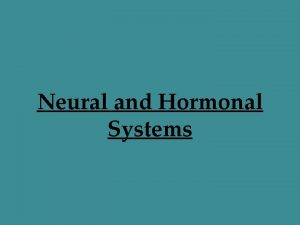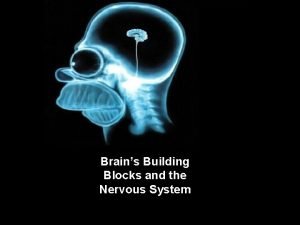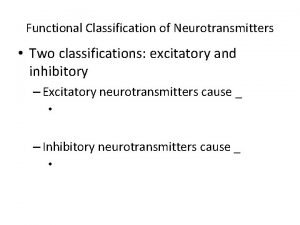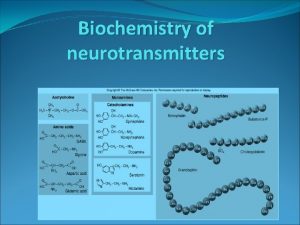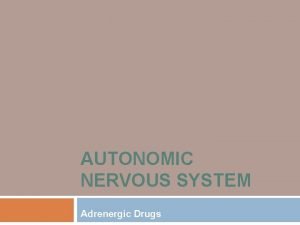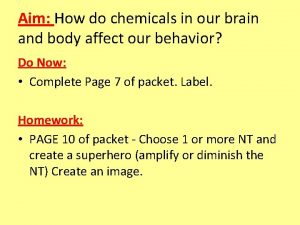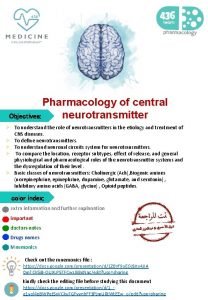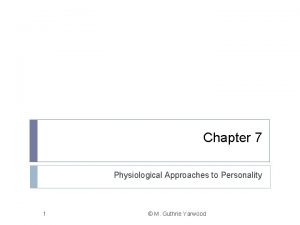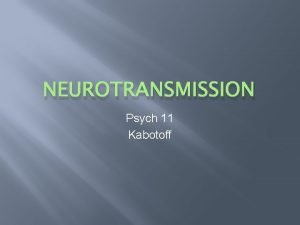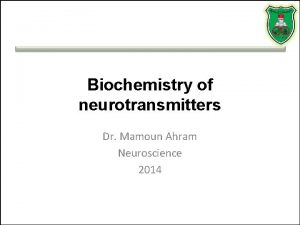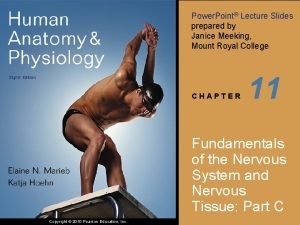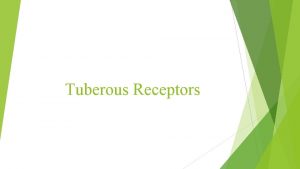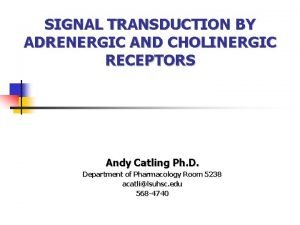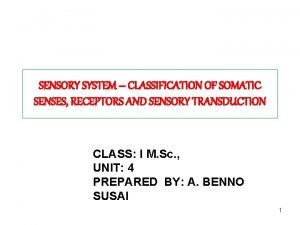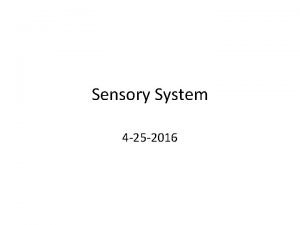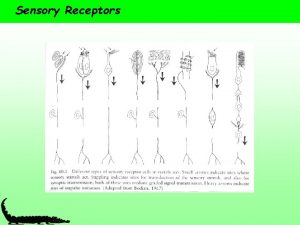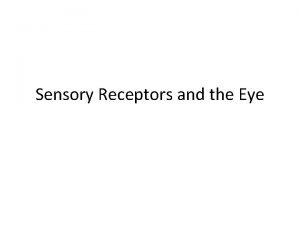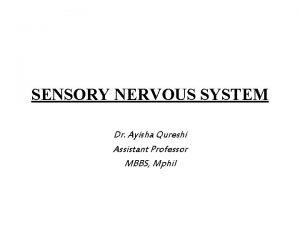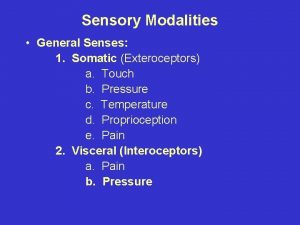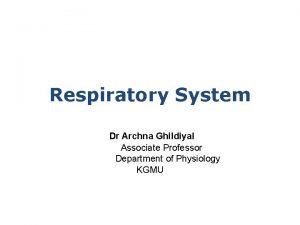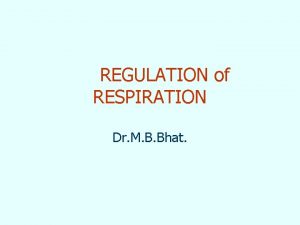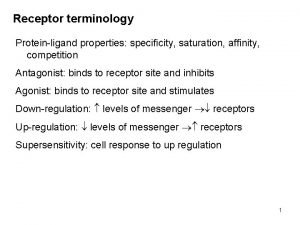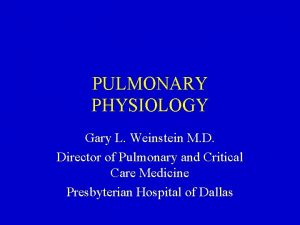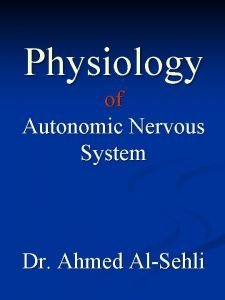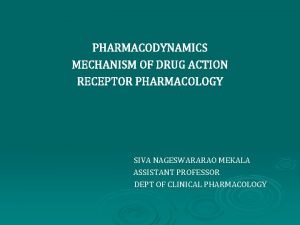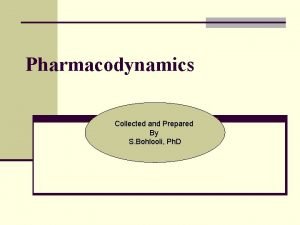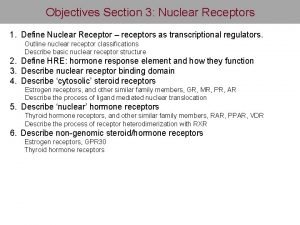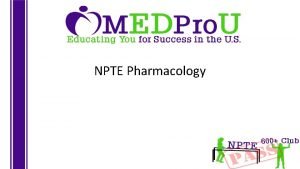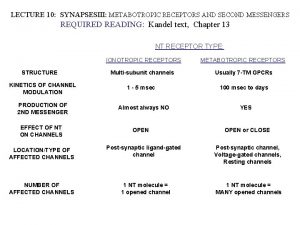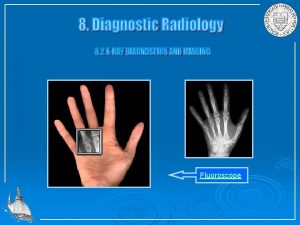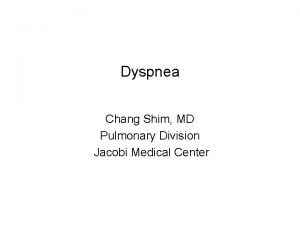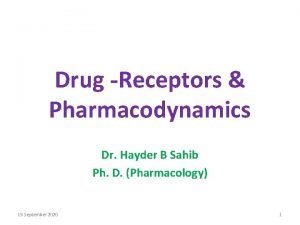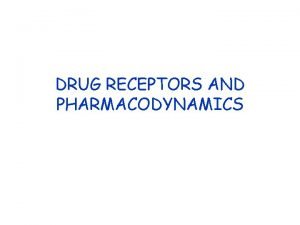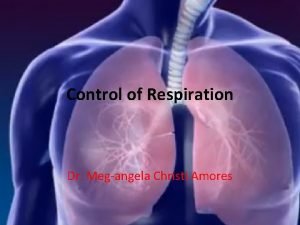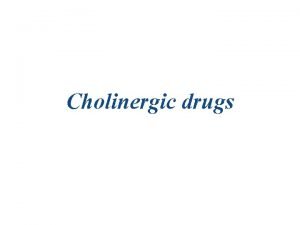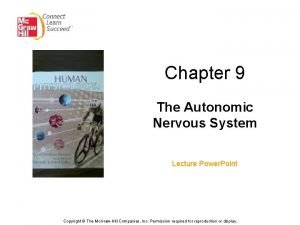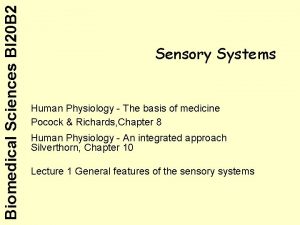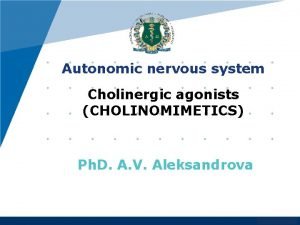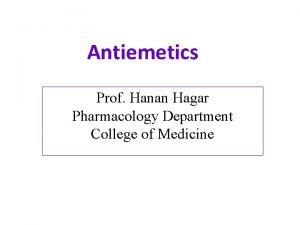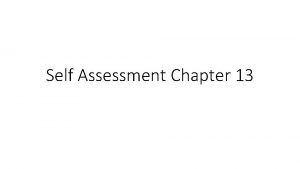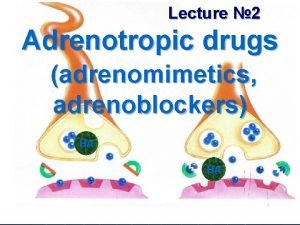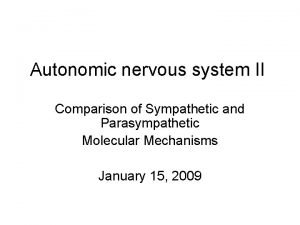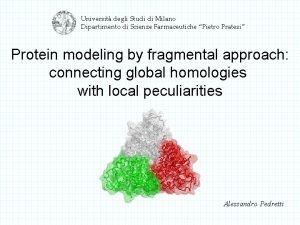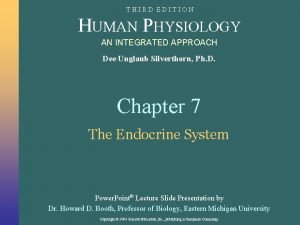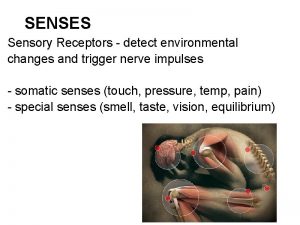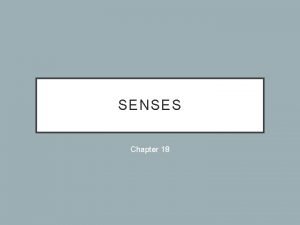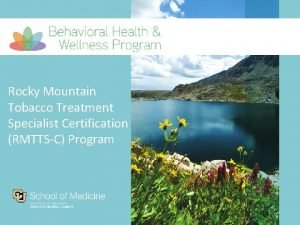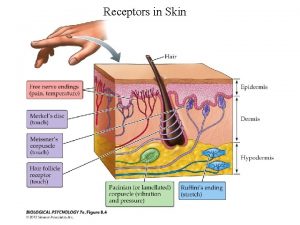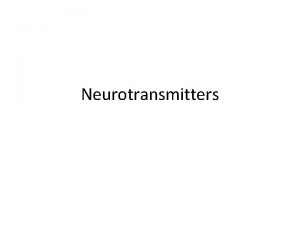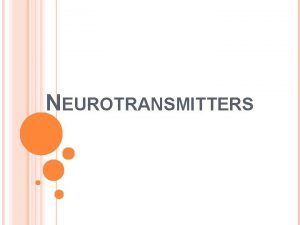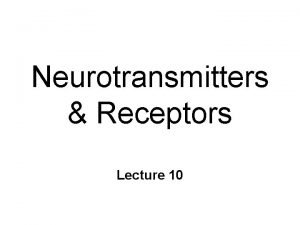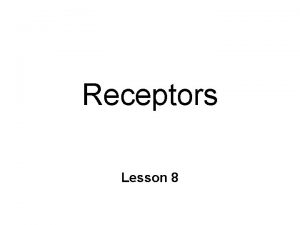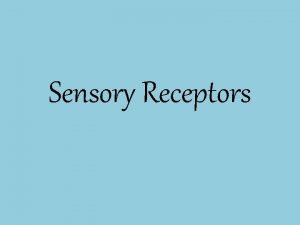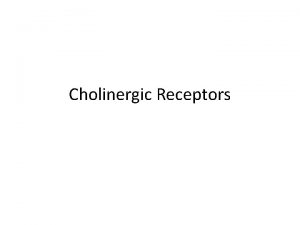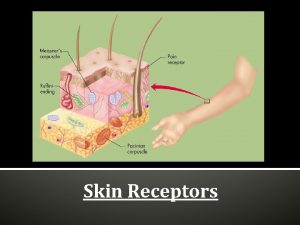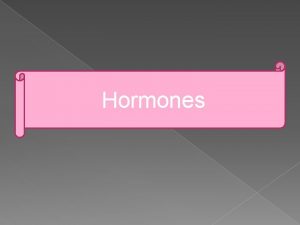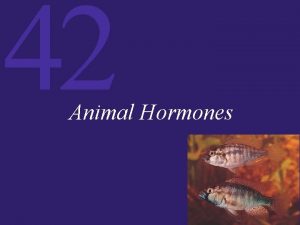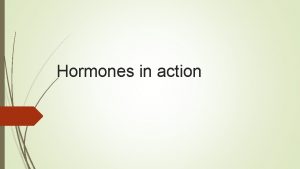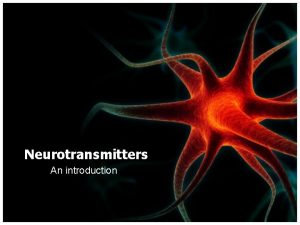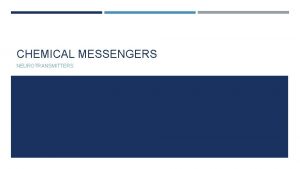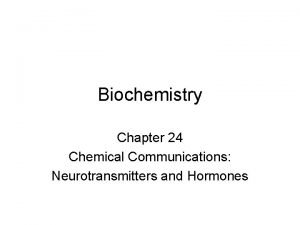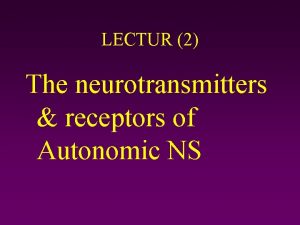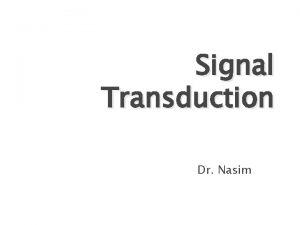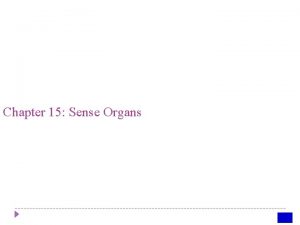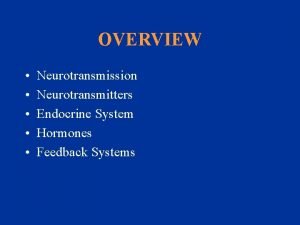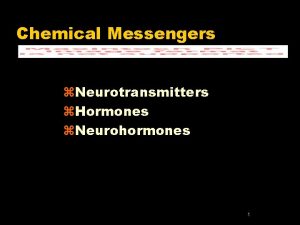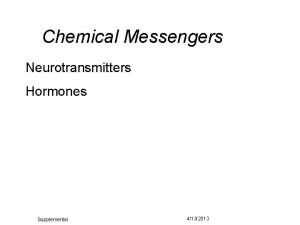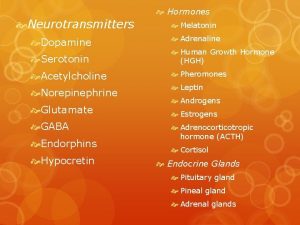Receptors of Hormones Neurotransmitters Seminar No 8 Chapter


















![Diazepine Benzo[f]diazepine is a seven-membered unsaturated heterocycle with two nitrogen heteroatoms in the positions Diazepine Benzo[f]diazepine is a seven-membered unsaturated heterocycle with two nitrogen heteroatoms in the positions](https://slidetodoc.com/presentation_image/39d7c00a04de5ef4e44838b270a205ea/image-19.jpg)













































- Slides: 64

Receptors of Hormones & Neurotransmitters Seminar No. 8 - Chapter 22 - 1

Q. What are general features of signal molecule? (see scheme on p. 130) 2

Signal molecule (e. g. hormone) • carries information into cell • has extremely low concentration in blood (10 -9 – 10 -15 mol/l) • specifically binds to receptor • signal molecule is quickly inactivated • agonist – (external) molecule which acts the same way as physiological signal molecule • antagonist – (external) molecule which blocks receptor no biological response 3

Q. What is the amplification of signal? 4

Amplification of signal = to make it more powerful 1 molecule of hormone ~ 100 -1000 molecules of second messenger transfers information to other intracellular systems and then is quickly inactivated 5

Two classes of hormones Feature Lipophilic hormone Hydrophilic hormone steroids, iodothyronines, calcitriol, retinoids aminoacid derivatives, polypeptides, proteins Water solubility no yes Transport protein* yes no Plasma half-time long (hours, days) short (minutes) Chemical type Membrane penetration yes no Receptor intracellular in cell membrane** Second messenger hormone-receptor complex c. AMP, Ca 2+. . * in blood ** hormone acts without entering the cell 6

Concentration of hormone in blood generally does not correlate with its biological effects More factors are involved (transport systems, chemical modifications, activity of receptors etc. ) 7

Factors involved in biological action of hormones Hormone synthesis regulation effects Hormone storage feed back Hormone secretion impuls Transport in ECF metabolism inactivation excretion Receptor in target cell condition Biological response 8

Two principal types of receptors • membrane receptors • intracellular receptors 9

The main types of membrane receptors Ligand gated ion channels • in synapses, activated by neurotransmitters, very quick response Receptors activating G-proteins • stimulate or inhibit adenylate cyclase /phospholipase C Receptors with guanylate cyclase activity • atrial natriuretic factors Receptors with tyrosine kinase activity • insulin 10

Nicotinic acetylcholine receptor • transmembrane protein = channel for Na+ and K+ • heteropentamer (α 2βγδ) • α-subunits have two binding sites for acetylcholine (ACH) • nicotine is agonist of this receptor 11

Four events on postsynaptic membrane (see the scheme and the graph on p. 131) 1. ACH binds to receptor channel opens influx of Na+ and efflux of K+ 2. partial depolarization of membrane (-60 -40 m. V) opens other type of voltage-dependent Na+-channel further influx of Na+ depolarization of postsyn. membrane ( +20 m. V) 3. this depolarization opens K+-channel (volt. dep. ) efflux of K+ membrane potential returns to normal value (-60 m. V) = repolarization 4. Na+, K+-ATPase gets ion distribution to normal state (Na+ OUT, K+ IN) 12

Q. Describe the formation of acetylcholine in the body. 13

Acetylcholine acetyl-Co. A choline acetylcholine food free choline or phosphatidylcholine 14

GABA receptor • channel for chloride ion (Cl-) • has the binding site for GABA channel opens Cl- ions get into cell hyperpolarization ( -80 m. V) decrease of excitability • benzodiazepines and barbiturates (synthetic substances) have similar effects like GABA, they are used as anxiolytics and/or sedatives • endozepines – endogenous peptides have opposite effects, close the channel (are responsible for anxiety feelings) 15

Q. Describe the synthesis of GABA. 16

GABA formation glutamate the reaction requires: enzyme (decarboxylase) + cofactor (pyridoxal phosphate) 17

GABA inactivation GABA succinate aldehyde oxid. deamination - NH 3 oxidation succinate CAC 18
![Diazepine Benzofdiazepine is a sevenmembered unsaturated heterocycle with two nitrogen heteroatoms in the positions Diazepine Benzo[f]diazepine is a seven-membered unsaturated heterocycle with two nitrogen heteroatoms in the positions](https://slidetodoc.com/presentation_image/39d7c00a04de5ef4e44838b270a205ea/image-19.jpg)
Diazepine Benzo[f]diazepine is a seven-membered unsaturated heterocycle with two nitrogen heteroatoms in the positions 1, 4 19

Benzodiazepines diazepam flunitrazepam tetrazepam anxiolytic / sedative hypnotic myorelaxant structural modifications lead to different pharmacological effects 20

Barbiturates allobarbital: R 1 = R 2 = -CH 2 -CH=CH 2 derivates of 2, 4, 6 -trioxoperhydropyrimidine 21

G-Protein linked receptors (scheme, p. 132) • extracellular part of receptor has a binding site for hormone • intracellular part has a binding site for G-protein • G-proteins are heterotrimers (αβγ) • in resting state, α-unit has GDP attached • after binding hormone (α-GDP)βγ makes complex with receptor GDP is phosphorylated to GTP • activated G-trimer dissociates: (α-GTP)βγ α-GTP + βγ • α-GTP interacts with effector (enzyme) activated/inhibited enzyme second messenger (↑ or ↓) 22

Main types of G-proteins • Gs (stimulatory) • Gi (inhibitory) • Gp (phospholipid) • and other. . . • see table on p. 132 !! 23

Q. What reaction is catalyzed by adenylate cyclase? 24

Adenylate cyclase reaction - diphosphate ATP c. AMP = cyclic 3’, 5’-adenosine monophosphate 25

Adenylate cyclase (AC) • membrane bound receptor • catalyzes reaction: ATP c. AMP + PP (diphosphate) • Gs protein stimulates AC conc. of c. AMP ↑ • Gi protein inhibits AC conc. of c. AMP ↓ 26

Q. What is the function of c. AMP? 27

c. AMP is the second messenger • c. AMP activates protein kinase A phosphorylation of cell proteins: • Protein-OH + ATP Protein-O-P + ADP ------------------------------------- • the second messenger c. AMP is quickly inactivated • c. AMP is removed by hydrolysis, catalyzed by phosphodiesterase: • c. AMP + H 2 O AMP 28

General scheme of phosphorylation substrate (protein) protein kinase phosphorylated protein (2 -) 29

Q. Which aminoacids can be phosphorylated? 30

A. • AA with a hydroxyl group in a side chain • serine • threonine • tyrosine write the structural formulas 31

Q. What reaction is catalyzed by protein phosphatase? 32

A. Protein-O-P + H 2 O Protein-O-H + Pi hydrolysis (dephosphorylation) 33

Phosphatidyl inositol system (p. 133) • Gp protein activates phospholipase C (PL-C) • PL-C catalyzes the hydrolysis of phosphatidyl inositol bis phosphate (PIP 2): • PIP 2 + H 2 O IP 3 + DG • both products (IP 3, DG) are second messengers 34

The structure of PIP 2 describe the structure 35

Q. What is the source of inositol in human body? 36

The origine of inositol Exogenous source: food Endogenous source: glucose-6 -P (side path of metabolism) 37

DG and IP 3 as second messengers • DG activates protein kinase C phosphorylation of intracellular proteins • IP 3 opens calcium channel in ER Ca 2+ concentration in cytoplasm increases Ca 2+ ions are associated with special protein calmodulin (CM) Ca 2+-CM complex activates certain types of kinases biological response 38

Insulin receptor • has four subunits (α 2β 2) • extracellular α-units bind insulin • intracellular β-units have tyrosine kinase activity phosphorylation of tyrosine phenolic hydroxyl of intracellular proteins including insulin receptor itself (autophosphorylation) cascade of further events biological response 39

Intracellular receptors: - cytoplasmatic - nucleic for steroids, iodothyronines, calcitriol, retinoids 40

Intracellular receptors • make complex with hormone • activate or repress the transcription of genes hydrophobic hormone penetrates cell membrane active complex receptor-hormone active complexes dimerize are translocated into nucleus inactive receptor in cytoplasm in complex with hsp dimer and other proteins 41

Steroid and thyroid hormones • insoluble in water in ECF are transported in complex with transport proteins • hormone themselves diffuse easily across cell membrane • they are bound to cytoplasmatic or nuclear receptors • in nucleus, the hormone-receptor complex binds to HRE (hormone response element) in regulation sequence of DNA • this leads to induction of m. RNA synthesis = transcription of gene 42

Events on synapses 43

Cholinergic synapses • neurotransmitter: acetylcholine • two types of receptors • nicotinic rec. (ion channel) – e. g. neuromuscular junction • muscarinic rec. (G-prot. ) – e. g. smooth muscles 44

Cholinergic receptors Feature Nicotinic receptor Muscarinic receptors M 1, M 3 M 2 Receptor type Ion channel Gp Gi 2 nd messenger ∆ψ* DAG, IP 3 c. AMP ↓ Antagonist tubocurarine atropine Locations neuromuscular juct. brain myocard * the change of membrane potential 45

Q. How is acetylcholine released from presynaptic terminal? 46

A. • influx of Ca 2+ triggers the fusion of presynaptic vesicles (contaning acetylcholine) with cell membrane and exocytosis of acetylcholine • acetylcholine is liberated into synapse 47

Q. What reaction is catalyzed by acetylcholinesterase? 48

A. acetylcholine + H 2 O choline + acetic acid hydrolysis of ester 49

Q. What is nicotine? 50

Nicotine is the main alkaloid of tobacco (Nicotiana tabacum) 2 3 more basic 1 p. KB = 6. 2 2 less basic 1 p. KB = 11 3 -(1 -methylpyrrolidine-2 -yl)pyridine 51

Q. Why nicotine triggers the release of adrenaline? 52

Main effects of nicotine • nicotine binds to acetylcholine nicotinic receptors in brain and other tissues including cells of adrenal medula • stimulates the secretion of adrenaline – because it binds to receptors in adrenal medula (p. 135 !) - silent stress other effects: • increases the secretion of saliva and gastric juice • increase intestinal peristalsis • vasoconstriction 53

Q. What is muscarine? 54

Muscarine is an alkaloid in some mushrooms muscarine tetrahydro-4 -hydroxy-N, N, N, 5 tetramethyl-2 -furanmethanammonium Amanita muscaria (fly agaric) 55

Inhibitors of acetylcholinesterase • Reversible – carbamates (N-substituted esters of carbamic acid), e. g. fysostigmine, neostigmine • they are used to improve muscle tone in people with myasthenia gravis and routinely in anesthesia at the end of an operation to reverse the effects of non-depolarising muscle relaxants. It can also be used for urinary retention resulting from general anaesthetia • Irreversible – organophosphates, very toxic compounds 56

Carbamates – General formulas carbamic acid alkyl carbamate N-disubstituted (hypothetic compound) (ester) alkyl carbamate 57

Organophosphates thiophosphoric acid kys. methylfosfonová methylphosphonic acid fluorophosphoric acid kys. methylfluorofosfonová methylfluorophosphonic acid cyanophosphoric acid sarin 58

Adrenergic synapses • neurotransmitter: noradrenaline • four types of receptors: α 1, α 2, β 1, β 2 • all of them are G-protein linked receptors • occur in various cells and tissues 59

Adrenergic receptors Feature α 1 α 2 β 1 β 2 G-protein Gp Gi Gs Gs DG, IP 3 c. AMP smooth muscle brain myocard smooth m. 2 nd messenger Occurence* * Example of occurence 60

Q. Describe the synthesis of noradrenaline. 61

The formation of DOPA and dopamine hydroxylation tyrosine decarboxylation DOPA 3, 4 -dihydroxyphenylalanine dopamine 62

Noradrenaline and adrenaline N-methylation hydroxylation at C 2 O 2, ascorbate Cu 2+ dopamine noradrenaline prefix nor- means N-demethyl adrenaline 63

The next seminar April 24, 2006 Chapter 21 - I. part 64
 Psychology study design
Psychology study design To what extent can a damaged brain reorganize itself
To what extent can a damaged brain reorganize itself Neurotransmitters and their functions
Neurotransmitters and their functions Neurotransmitters and drugs
Neurotransmitters and drugs Function of excitatory neurotransmitters
Function of excitatory neurotransmitters List of neurotransmitters
List of neurotransmitters Inhibitory neurotransmitters
Inhibitory neurotransmitters Nerves are neural cables containing many
Nerves are neural cables containing many How do neurotransmitters influence behavior
How do neurotransmitters influence behavior Functional classification of neurotransmitters
Functional classification of neurotransmitters Small molecule neurotransmitters
Small molecule neurotransmitters Acute bronchospasm
Acute bronchospasm Lack of dopamine
Lack of dopamine 4 neurotransmitters
4 neurotransmitters Inhibitory neurotransmitters
Inhibitory neurotransmitters Neurotransmitters and personality
Neurotransmitters and personality Fun facts about neurotransmitters
Fun facts about neurotransmitters Neurotransmitter synthesis
Neurotransmitter synthesis Neurotransmitter of somatic nervous system
Neurotransmitter of somatic nervous system Ipsp
Ipsp Tropic hormones hypothalamus
Tropic hormones hypothalamus Chapter 45 hormones and the endocrine system
Chapter 45 hormones and the endocrine system Tuberous receptors
Tuberous receptors Olfactory epithelium
Olfactory epithelium Difference between alpha and beta receptors
Difference between alpha and beta receptors Types of sensory receptors
Types of sensory receptors Umami taste receptors on tongue
Umami taste receptors on tongue Proprioception vs mechanoreceptor
Proprioception vs mechanoreceptor Classification of sensory receptors
Classification of sensory receptors Exteroceptors
Exteroceptors Sensory neuron
Sensory neuron Exteroceptors examples
Exteroceptors examples 3 types of lung receptors
3 types of lung receptors J receptors
J receptors Derine
Derine Gary weinstein md
Gary weinstein md Orbelli phenomenon
Orbelli phenomenon Receptors in pharmacology
Receptors in pharmacology Iontropic
Iontropic Nuclear receptor
Nuclear receptor Alpha 1 vs alpha 2 receptors
Alpha 1 vs alpha 2 receptors Difference between ionotropic and metabotropic receptors
Difference between ionotropic and metabotropic receptors 4 types of image receptors
4 types of image receptors Jan j shim md
Jan j shim md Spare receptors
Spare receptors Graded dose response curve
Graded dose response curve Brilaese
Brilaese Muscarinic adrenergic receptors
Muscarinic adrenergic receptors Preganglionic parasympathetic fibres
Preganglionic parasympathetic fibres Hearing and equilibrium
Hearing and equilibrium Classification of sensory receptors
Classification of sensory receptors Nicotinic vs muscarinic
Nicotinic vs muscarinic Chemoreceptor trigger zone
Chemoreceptor trigger zone Adrenergic receptors
Adrenergic receptors Referred pain chart female
Referred pain chart female Octadinum
Octadinum Nicotinic vs muscarinic receptors
Nicotinic vs muscarinic receptors Alpha 2 receptors location
Alpha 2 receptors location Alpha-2 adrenergic
Alpha-2 adrenergic Nicotine acetylcholine receptors
Nicotine acetylcholine receptors Peptide hormone receptors
Peptide hormone receptors Thermoreceptors
Thermoreceptors Sensory receptors
Sensory receptors Nicotine acetylcholine
Nicotine acetylcholine Pain receptors in brain
Pain receptors in brain

